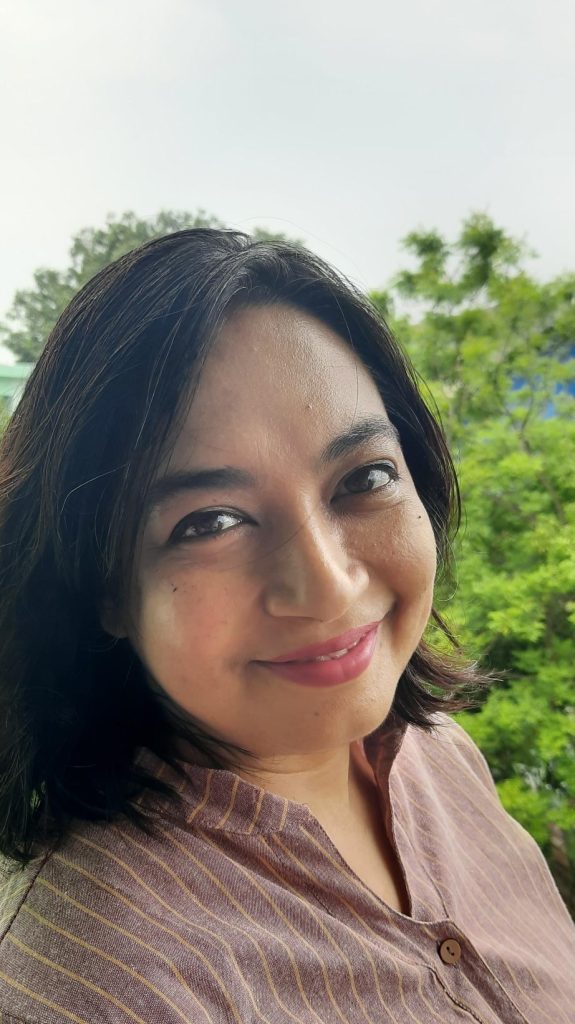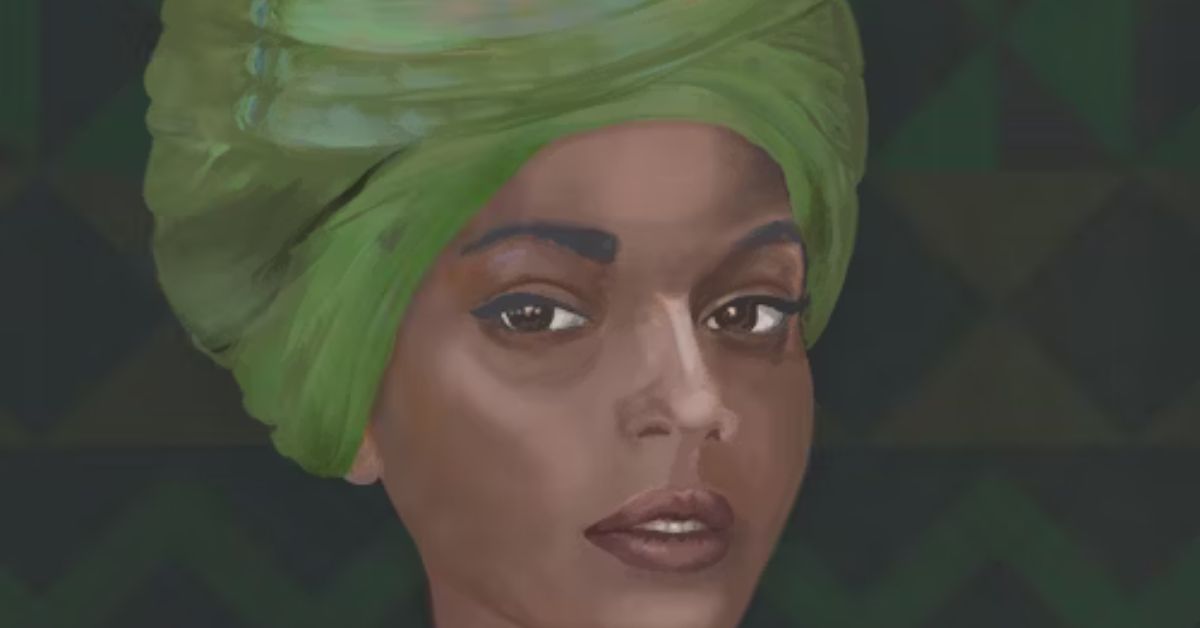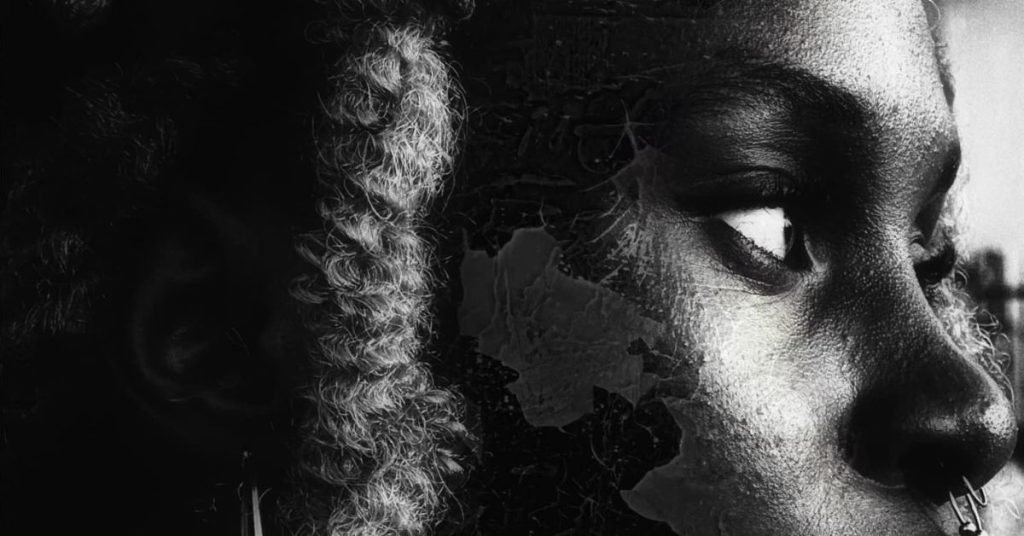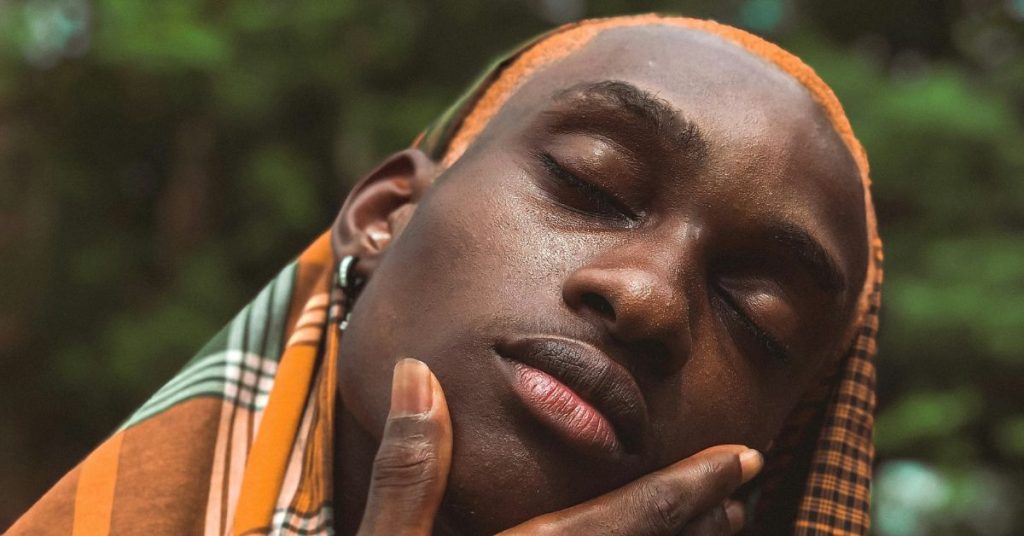They say you can’t be a writer unless you have led many lives. I was a seamstress once, and of the many people I measured, I could never quite measure myself. One of the reasons, readers would agree, was because the self is a myth, a vessel whose contours we assume, constantly altering in physical and metaphysical terms. Besides, it wasn’t practically possible.
While being a seamstress (which was a period right after schooling and I had no idea what I was going to do with my life), I was, at once — a daughter, sister, friend, student, believer, debater, brown, cosmopolitan, liberal, deprived, oppressed, nonconformist and more —morphing into likenesses and distinctiveness in a world so full of simulacra.
Readers might share my dilemma—being one and many, at the same time, means a lot of role-plays. Assertion of one particular persona at the exclusion of all others is fraught with defects. Therefore, it is safe to assume that my Selfhood, in purely definitive terms, has remained an illusionary one. As an impressionable young person, I grappled with my selfhood constantly trying to fit the dimensions expected of me. The coordinates by which to measure me were ever-changing; often exhausting me.
After I graduated, the dark clouds in my mind of confusion, rebellion, identity crisis parted, and I gravitated towards the notion that the self is anything but a quagmire. Multiple attributes flow seamlessly and constantly within it. There was no denying some of my measures were so upfront and in your face that even the unaided eye could take a naked measurement.
I was and still am on the heavier side, I have black straight hair and my skin is brown. I like to believe my age is somewhat difficult to pinpoint. My physicality gets voted up or down in the onlooker’s eyes all the time, but still, age and appearances are measurements, and they bode well when you’re in a sea of humanity.
On one of my travels around that time, a lady co-passenger befriended me at Mumbai airport, precisely because our appearances were similar, though she was from Portugal. Passing the minutes, we talked about international airports (it seemed a harmless topic for initiation) as we watched the world’s busiest single runway at a distance, being operated smoothly, until the next hiccup.
We talked about the Madeira Airport in Portugal near where her hometown was located. The conversation drifted to a discussion on her favorite Portuguese philosopher Fernando Pessoa, who had seventy-five pseudonyms. But Pessoa, she informed me, hated those names to be called pseudonyms because he believed they had an independent intellectual life.
We sat silent for a while ruminating on the knowledge that several personas could easily and comfortably live within the same body.
Later, over paper cups of coffee at the mini-outlet near the boarding gates, she asked me if I knew the Nobel laureate poet Rabindranath Tagore, since I let her know that I was from Kolkata. I said I knew him. Quickly though, I realized that my statement was both truth and lie.
I do know Tagore, as a matter of fact, through his works, not how one may assume knowing another person. He died half a century before I was born. But because I knew his life and works so well, Tagore was like a friend. You’re a friend of someone you know well, someone you grew up with, just like you’re a friend of yourself, a self whose dimensions—physical and otherwise—change across time slices and space planes. She appeared pleased.
Agreements and commonalities breach differences. We talked through the flight.
Strangely, and not so, the Portuguese lady and I—we did not keep in touch afterwards. Years later, I was unsure if I had really met a woman of her description and manner, or if the episode was entirely a figment of my imagination.
My life was soon that of an educator at a school—famously cosmopolitan. That again threw up the question of measuring myself—whether my own reading and education could ‘transform’ the pupils of various measures and ‘engineer’ their development as enlightened adults.
I say ‘various measures’ because as a Middle School class, they were of a transformative age group, quickly vulnerable and stubborn to the same impulses, but brilliantly receptive to both what was favorable and those that were unfavorable. Plus, pulled from different cultural, economic and social backgrounds, and because some of them were “free” candidates sponsored by the State, they were an eclectic mix.
On the first day, standing in front of the class, which sat with eager eyes and cultivable minds, having risen from multifarious worlds of upbringing, with backgrounds of families constantly measuring issues of race, color, and class, I measured myself. I threw doubts into the void above their heads through a pregnant pause. They responded with an easy acceptance of the fact that the resolution of issues of conflict will, in any case, require a lifelong crusade and can wait!
I began the journey with newly furrowed minds, careful not to plant seeds of withdrawal or resentment to any questions, least of them on the measures of identity. Ploughing through many innocent and brilliant curiosities rising from my class of forty-five pupils, colored my days. I enjoyed my position, including my role as an emotional support and intellectual mentor.
Simultaneously, I had to measure up to ease their crusade through their developmental years, though it would be, in many ways, a lonely struggle for them too. I needed to delve into my life experiences, obscure my prejudices and impart learning that would find resonance in that ageless expedition. As you have perhaps experienced yourself, this quest to measure up to someone larger than one’s self requires almost a self-exile.
I did embark on a voyage of self-discovery exiled from the carefree persona I had until then. I prioritized their needs and attuned to their curiosities as much as I could, but still watched the adolescents swirling in a whirlpool of questions. Their tender minds assimilated what they thought were answers, irrespective of where those answers came from. Often, oscillating between half-truths and untruths, they came to me for some measure of the factual.
The process added to the measures of my waist as much as to the faculties of my brain. From sitting for long hours, to spending too much time in stuffy rooms, I had begun to lead an unhealthy life. Even in my rest hours, I’d be lazing in bed, or eating oily food ordered from the neighborhood eatery for want of better options, and also as a means of escaping from my immediate routine.
Once again, the pursuit of fitting into the dimensions expected of me as a young person of marriageable age began to overwhelm. Under repeated reminders from family and friends, it was non-negotiable that I would not need to conform to their notions of myself.
This constant pull-and-push by factors exterior to myself left me conflicted. A childhood friend of mine who had moved to live in a city in the Arabian Gulf identified this self-exile when she met me after ten years. She, interestingly, called it a re-configuration, which helped negate some of my uneasiness.
Our shared social identity of womanhood transcended differences of geography, class, and profession, lending itself to a powerful healing touch. What is the ‘Ship of Theseus’ anyway, she queried, except for a label in the human mind. Our Selves are both the restored and reconstructed ship; the same as well as different. My sense of entrapment was replaced by the more resolute feelings of idealism and truth.
I, on the other hand, recognized the play of places in my childhood friend’s measures. Though outwardly, she retained her youthful, inviting face, she was embodied with unique perspectives and world views because of factors to which she had been exposed, and to those that I never had the opportunity to be.
Irrespective, I’m sure both of us would have recited this same stanza to our own appreciate ears in the freedom of the personal solitude of our bedrooms:
Pretty women wonder where my secret lies.
I’m not cute or built to suit a fashion model’s size
But when I start to tell them,
They think I’m telling lies.
I say,
It’s in the reach of my arms,
The span of my hips,
The stride of my step,
The curl of my lips.
I’m a woman
Phenomenally.
Phenomenal woman,
That’s me.
— Phenomenal Woman by Maya Angelou
Between ourselves, we had generated our scaffolding for multiple attributes, manifested in the assertiveness of our unique identities. She talked of food and books as part of her nostalgia, even though I strictly and immediately felt an aversion to her idea of ‘nostalgia’, because it reminded me of a deep rift between us, one that did not exist for us when we were young children growing up together in the same place.
She talked of exilic experiences, colorful diasporic encounters, but vowed unflinching allegiance to the corporate she worked with and the city she now lived in. Though she did not rule out coming back to India in our conversations, I strongly doubted it.
I wondered whether it had been easy for her to deconstruct her Indianness. It took me back to the cubical three-hundred-square foot measurements of our working-class homes; our common upbringing; and the reciprocal relationship we had with society. We had a feeling of continuity with our families, families which celebrated diversities, making no distinction on lines of religious or regional identities.
As a nation, with our history of invasions and foreign settlers, like mille-feuille sheets bound in profound dilemma, our nationhood was intricately intertwined in multi-cultural ethnicity. It was an Indianness identified with pomposity and vibrancy. We had no inkling of our identities being in perpetual crisis as it is today.
She had uprooted herself successfully and measured up to the demands of survival. I, rooted in a definite cartographical demarcation, could not quite comprehend whether nostalgia and lamentation ever overpowered her.
My rootedness, and therefore stagnation in life and livelihood, stood in stark contrast to the mass migration of skilled workers from India during the 90s. Most of those who had technical or professional degrees migrated, negotiating a stiff challenge to their selfhood in foreign shores. Yet, their assimilation was permitted and heavily aided by the openness to plurality in those countries.
A few years after that, I was once again on the throes of measuring myself—this time in the eyes of suitors descended upon our house to ‘meet the bride’. This custom, to my knowledge, is very unique to the subcontinent. I was lucky because my education allowed me an empowered voice to make my decisions known and which were usually respected! For most of our less empowered womenfolk, gender voices are suppressed, degenerating into inequalities, in rights, wages, and liberties.
Voices of victimhood, brutalities, and injustices, have often ended at the doorstep of the realization that ‘a happy life means prudent compromise.’ Conformity to feminine traits and conventionality is forced upon so as not to invite investigation, or indeed, ruffle the hierarchical calibration. It is a pity that even very educated countries continue to exercise authority over the biological choices of a woman; indeed, govern the body of a woman.
In time, I had an ascribed identity at the intersection of my selfhood with that of strangers.
I, the new bride, began to measure others to whom I belonged overnight. The others were trying to do the same — measuring my features, my thoughts in politics and society, my tastes in poetry and films, my dreams in the realm no one’s ever been. It was, and still is, a judgmental, mixed, infinite scope between two hemispheres meeting at the median — his family and mine; my husband and I.
Of all the other things, I learnt to be more patient, tolerant and yes, expectant and hopeful of approval. Like a new product on a megamall shelf. Apologies, if that meant I was putting myself on display. I do mean that but not as I, singular. We all put ourselves on that shelf, waiting for people to evaluate us, review us and possibly leave us ratings according to their expectations.
It was wonderful to grasp this self — a personality weaved beyond the body and mind I had built myself over the years. Like I was, at once, a dream-woman, a fairy, a princess, a pretty-young-naïve-twenty-something, a witch and a blood-sucking Dracula, depending on the relative in question. However, it was, in no way, a difficult situation to mold myself into, with excesses of love and kindness shared between the dynamics of a new family.
I began to understand this fluidity of being myself, as an entity within a plurality, my selfhood constantly in flux.
When I became a mother to two sons, over the course of a decade, I saw myself changing from a superbly inefficient, always irritated, and overworked woman, to someone who enjoyed her motherhood and the little-big inaccuracies of her household. It was at worst, baffling, and at best, remarkable, the transformation that motherhood brought to my being. I began to hide and unhide my priorities and conflicts with the rest of my family.
With my children, I was nearest to my truest self. It was serendipitous to learn that their identity was different to, but often similar to my inner core. I wondered if that was true in other relationships. When the ascribed identities are peeled off, underneath lies the human, quite akin to the next person, the uniqueness only a façade, individuality only a myth in the quest for belongingness.
Motherhood taught me that the self is, in fact, formless. I failed to comprehend how one synthesizes history, geography, gender, and genetics into a concise identity?
This was also an age where I began to tinker with technological friendships like most others. It was baffling at the onset—a tsunami of people creeping over me, people I had long lost in the sea, surfacing, a barrage of their online feeds flooding my inbox, several of them plain anonymous.
A drift towards a stateless, nameless, faceless, technological anonymity appeared agreeable to some. I could only be awed by the paradigm shift where identity ownerships flowed from individuals to groups that assimilated the self with others having nearly common attributes.
I felt, like many others, the liberating effects of having multiple diverse selves, running parallel without encumbrances or accountability; the voices of joy, ecstasy, pride, anger, anguish, resistance broke the narrow banks within which people measured their selves hitherto. Stemming from identity insecurities, each of us re-measured ourselves. We dwelled on manufacturing a selfhood through continual identity reengineering based on popular culture. Measurements were defined by ‘likes.
Simultaneously, I was caught in the crossfire of engaging dialogue as much as in the quicksand of subsuming paranoia. We saw thinkers and writers being persecuted for subscribing to an idea which, according to intolerant political powers, is not in consonance with the majoritarian expressions of rightfulness.
We, as a race, believe in myths like religion, nation or money in pursuit of which personal sacrifices can be made. The myth of nationalism— ‘Nation First’— was engineered to cloak collective selfhood with hollow machismo. One group exuded superiority more than the others. It began to be used more rampantly than ever before with increasing protectionism, exclusivity advocacy, and seclusions.
Stray people, of insecure measurements of selfhood, identified with a commonality and through its vociferous assertion, engaged in struggles of power and justice. Sometimes these were mere shrouds for class conflicts and dilemmas of ownership and rights, erupting in metaphorical battles that unhide the social fault lines. Extremist nationalism had been further butchered into tiny subgroups and ethnic identities. It was disconcerting for many of us to witness this extreme fragmentation.
I recall some earliest memories of school, where I was the measure of a six-year-old uniformed girl, two pigtails hanging, my black boots shiny on the newly coated tar that led to my kindergarten, was to sing our national song Vande Mataram. The song is, again, written by Tagore,
‘We have stitched a thousand minds together in a single thread/
We have devoted a thousand lives to a common task/
Vande Mataram, Vande Mataram’.
The unifying cohesiveness which brought the diverse strands of our society, to coalesce in one era after another to force fruitful action, began to be increasingly absent from neighborhoods, workplaces and indeed in society as a whole. We wondered whether unity is scarce, like collective conscience, for moving the cogs in the cartwheels of time.
Nevertheless, technology has yielded to the smudging of borders, real and hypothetical, towards a disincarceration of the concept of singular identity. I mingle with people at a virtual level with whom superficially I have nothing in common. But we soon discover otherwise and people are the same everywhere. Our selves are only stimulated images—attributes added and repeated in varying proportions.
I look forward to conversations with a cross-section of people—non-uniform, but balanced; defective, but resulting in progress. We embrace each other’s ‘otherness’, and alternative focal points from other time and space contexts. These petits recits, I find, have the best chances for peaceful co-existence in a world divided by vested interests.
Cross dialogues enable deeper acquaintances with identities that may be at conflict on economic, geographical or political planes. They transcend the barriers of culture, religion or even language. Expressions unhobble the imagination, project diversity as a dividend and advocate acceptance of the diverse, not assimilation.
With age, I take refuge in philosophy, as in the birthing pool of the Upanishads. Conscious internalization, I believe, will alter the measures of my selfhood to that of a higher being. I feel like a traveler through the metaphorical river of life, having a different identity every moment, where strangers ascribe identities.
The context of the universal and the person as negligible speck dawn on my consciousness as do the futility of violent assertions to claim what belongs to none, merely transitioning through a plane. In the end, all life is dual, paradoxical— purposefulness and futility, the profundity of pain and pleasure. I nurture realizations that we may be a mere amanuensis to the designs of a greater Creator, that there is no uniqueness of personal identity.
For now, these perspectives give a new measure to my selfhood as a negligible participant in the theatre of the universe, yet powerful enough to spark a dialogue when the process of natural selection and individual choice is undermined at the altar of a manufactured radicalization brought about by scarcity of resources, fallacy of the belief in majoritarian supremacy and suspicion of the ‘other’.
Construing hyper-sensitivity to selfhood, I finally recognize, is mere futility, even an apparatus of confinement, although it might be an instrument of loving and being loved. The exercise of measuring myself only results in how dwarfed I feel.

Mandira Pattnaik is an Indian writer published in The Cincinnati Review, The Rumpus, Iron Horse Literary Review, Emerson Review, Best Microfiction (2024) and Best Small Fiction Anthology (2021 & 2024). Longlisted in Commonwealth Short Story Prize 2025, she writes across categories and genres. Mandira is the author of collections/novellas “Glass/Fire” (2024), “Girls Who Don’t Cry” (2023) and “Where We Set Our Easel” (2023). Visit mandirapattnaik.com
Because great writing shouldn’t be hard to find. Subscribe to get the best reads in your inbox.




